On January 4, the Earth is closest to the Sun. But it does not affect the onset of winter in the northern hemisphere. However, on planets revolving around other stars, things may be not the same as here. We still know very little about them, but some amazing things can be predicted right now.

Seasons on Earth
Every year winter comes to the Northern Hemisphere of our planet, bringing cold, snow, and blizzards. At this time, somewhere in Australia, it is the height of summer and there are large-scale forest fires. In six months, everything changes — we have linden trees in bloom and you can swim in the river, and somewhere in the south of Argentina, temperatures drop below zero.
To date, scientists have confirmed the existence of more than 5,000 exoplanets, and an even greater number remain candidates. Many of them could be similar to Earth, but does this mean that they experience the change of seasons similar to ours?
It is almost certainly not so. If only because even on Earth there are several climatic zones and the alternation of summer and winter that we are used to is characteristic mainly of temperate and polar latitudes of both hemispheres.
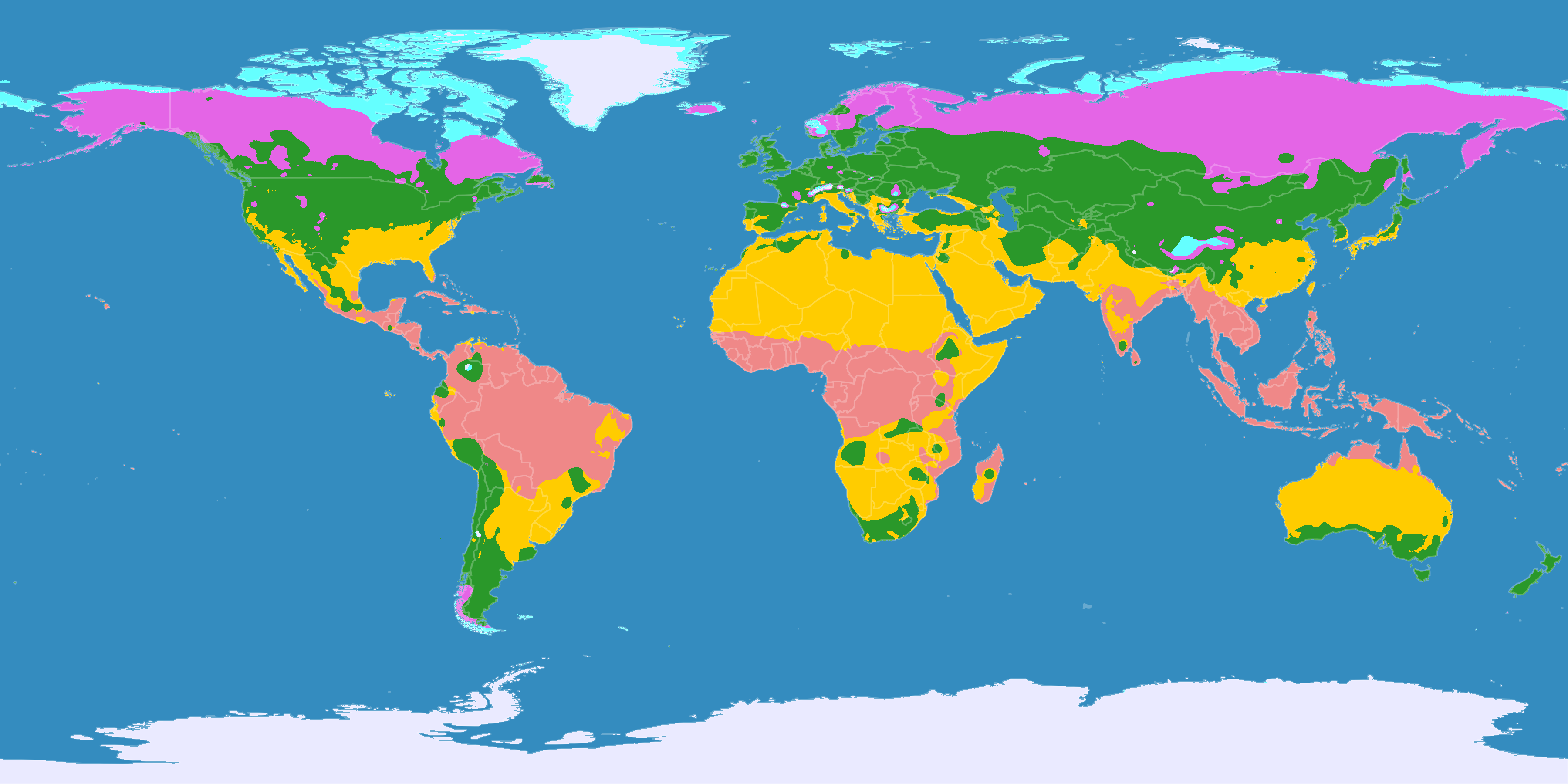
In the equatorial and tropical zones, the temperature practically does not change throughout the year. The difference is mainly between winter and summer, when significant rains are observed, and spring and autumn, when the dry season occurs.
In addition, there are zones with a monsoon climate on the coast of the Pacific Ocean. There temperatures can vary both according to the model of temperate latitudes and according to the tropical model. But most of the precipitation falls in only one season — summer.
The tilt of the axis of rotation
Seasons on Earth are not observed because the Earth is closer to the Sun in summer than in winter. In fact, the orbit of our planet is almost circular, that is, its heliocentric distance does not change very much. The reason for the change of seasons is the inclination of the equator to the plane of the orbit. If the axis of rotation of our planet were perpendicular to the ecliptic, then neither winter nor summer would ever happen and the climate would be the same all year round.
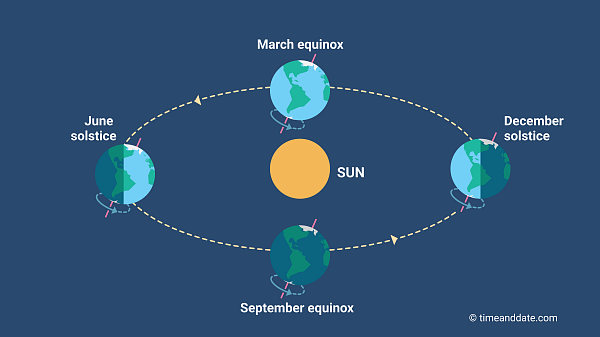
However, the Earth’s equator is inclined to the ecliptic at an angle of 23°26′. And the direction of the axis of rotation remains unchanged throughout the year. Because of this, our planet returns to the light either by the northern or southern hemisphere.
For the inhabitants of the equatorial zone, this is not so noticeable, because the Sun remains mostly above their heads, only slightly deviating to the north, then to the south. But in the temperate latitudes this leads to significant fluctuations in the length of day and night. They are the primary cause of large temperature fluctuations. When summer comes in one of the hemispheres, it receives significantly more solar energy during the day, so the average temperature there rises, while in the other hemisphere, the opposite happens.
These changes are especially extreme near the poles. Here, the inclination of the plane of the equator leads to the fact that for a significant part of the year the Sun either does not rise above the horizon at all, or does not set below it at all. This phenomenon is known as polar night and polar day.

How the tilt of the equator will affect the climate of exoplanets
On those Earth-like exoplanets that are illuminated by their stars to the same extent as Earth is by the Sun, have circular orbits and an axis tilt, everything should happen in the same way as here. There will be equatorial zones, where the seasons are felt quite weakly, temperate zones, where their change will feel familiar for us, and polar regions, where winter will mean constant night, and in summer the local sun will not set below the horizon.
At the same time, the smaller the angle of inclination of the equator to the ecliptic is, the wider the equatorial zones are and the smaller the temperate and polar zones are. With its increase, everything will happen on the contrary: the latter ones become wider, and the former become narrower.
The most extreme case is when the exoplanet’s equator is perpendicular to the ecliptic plane, and its axis, on the contrary, lies in it. In this case, the planet seems to be rolling in its orbit, “lying on its side.”
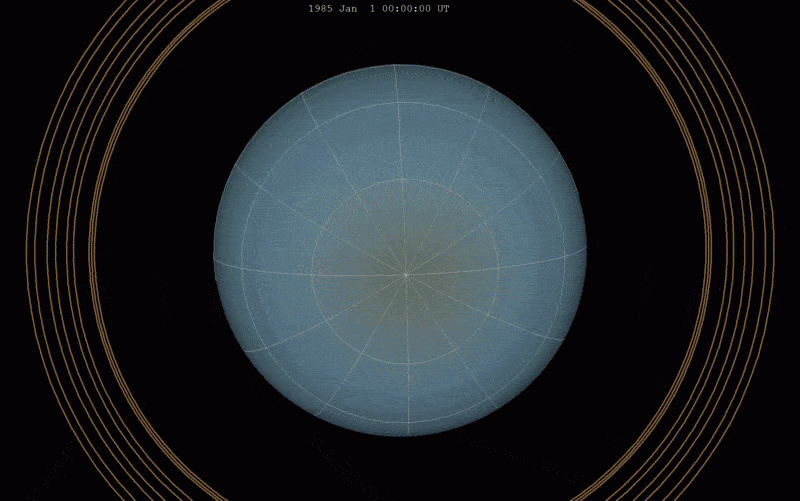
In the Solar System, Uranus is the closest to such a state. Almost the entire conventional surface of this cold gas giant is the subpolar zone. If something similar took place on some exoplanet in the “habitable zone”, then polar night and day would be observed there even near the equator.
The eccentricity of the orbit does not affect the seasons
The above-described pattern of changing seasons occurs on Earth due to the fact that the eccentricity of its orbit is only 0.017. This means that the most distant (aphelion) and the closest (perihelion) points of its orbit still exist. But the difference between them makes up only 3.4%. Therefore, this factor has practically no effect on the climate. On the contrary, our planet passes perihelion in January, when winter rages in the northern hemisphere.
But as research tells us, exoplanets can have much larger eccentricities, that is, their orbits are very elongated and the distance from the star varies much more. If at the same time the axis of rotation is perpendicular to the plane of the orbit, this will lead to a change of seasons completely unlike ours.
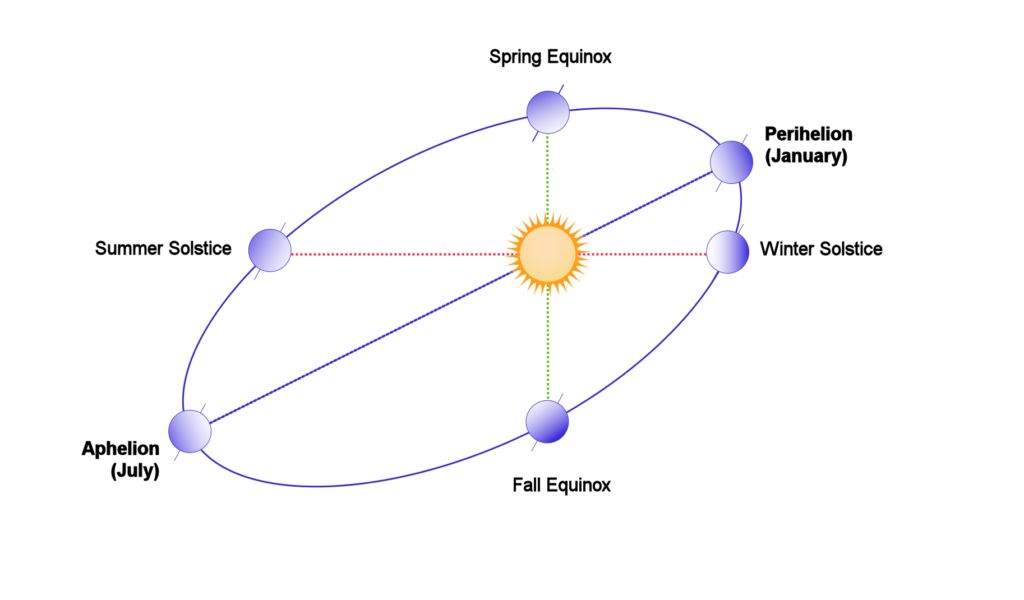
At the same time, the change in the length of the day will not be observed anywhere on the planet. The night will always and everywhere last exactly half a revolution around the axis. Climatic zones will be almost imperceptible and will be determined only by the angle at which the star’s rays penetrate the atmosphere.
Instead, the brightness and apparent size of the central luminary will change over the course of the year as distance increases or decreases. It will be different from the “cold winter sun” we are used to. In the temperate latitudes of the Earth, this effect occurs due to the already mentioned change in the angle at which the sun’s rays penetrate the atmosphere for most of the day.
On a planet whose orbit has a large eccentricity, the Sun can rise overhead to the zenith even in winter, but its size is smaller than in summer. And this is observed immediately all over the planet. Winter comes simultaneously in both hemispheres, and it is impossible to hide from it “where it is summer now”.
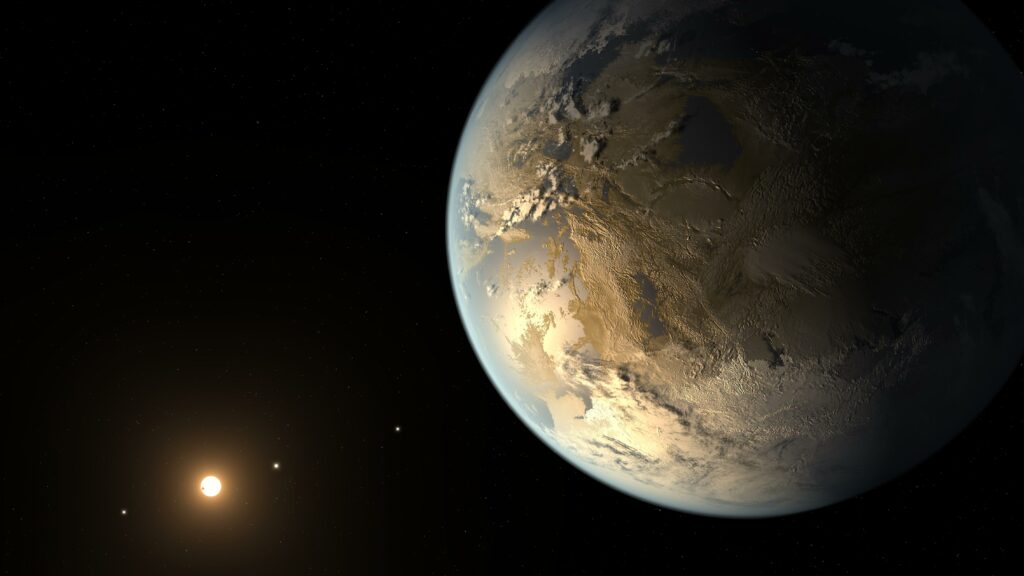
At the same time, it should be remembered that the speed of movement of a planet in an orbit with a large eccentricity is uneven. It is largest near perihelion, and smallest near aphelion. Therefore, the celestial body passes the corresponding sections of the orbit the fastest and the slowest.
In the case of an Earth-like exoplanet, this would mean that its summer would be very short and contain a pronounced maximum when the sun would be simply unbearable. Winter, on the contrary, is relatively long and uniformly cold.
Again, the extent to which all these features show up depend on the magnitude of the eccentricity. The smaller it is, the less distinct the seasons are across the planet. Conversely, with a highly elongated orbit, heavy rains and hurricanes in late summer and autumn may be added to all of the above, due to the fact that the planet will store a lot of energy in the form of water vapor in the atmosphere.
Combined cases
Of course, it is more than probable that the planet has both a noticeable inclination of the equator to the ecliptic and a significant eccentricity of the orbit. In this case, the effects of these two factors will overlap, and the final picture will depend on their ratio.
It is interesting that there is a planet in the solar system that can demonstrate the interaction of the elongation of the orbit with the inclination of the axis. This is Mars. The eccentricity of its orbit is equal to 0.0934, that is, it is noticeably elongated. And the inclination of the equator to the orbital plane is 25.19°.
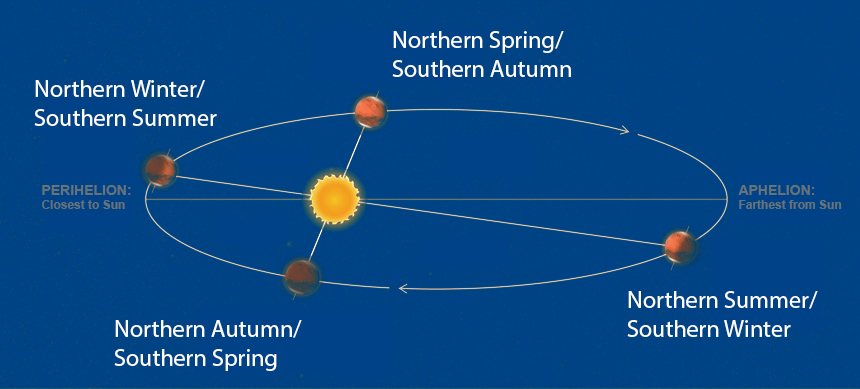
Because of this, in general, the change of seasons on Mars occurs in the same way as on Earth. Polar caps melt alternately in the northern and southern hemispheres. But the perihelion of the orbit falls on the time when winter rages in the north. As a result, it is relatively short and warm there, and the summer, which falls on the period when the planet moves slowly in the aphelion region, is cool and long. In the southern hemisphere, everything is the opposite: a short hot summer is replaced by a long cold winter.
At the same time, it should be remembered that all this is happening on Mars, that is, temperature changes lie in the range between cool and incredibly cold. But on an exoplanet that has the same combination of orbital parameters and at the same time receives more energy from the star, everything would happen in the same way.
It should not be forgotten that this happens only because the inclination of the equator to the orbit dominates as a climate-forming factor on Mars. If the eccentricity were strong, and the inclination of the axis were secondary, then winter and summer would come simultaneously, but in one hemisphere the former would be warmer, and in the other — the latter.
